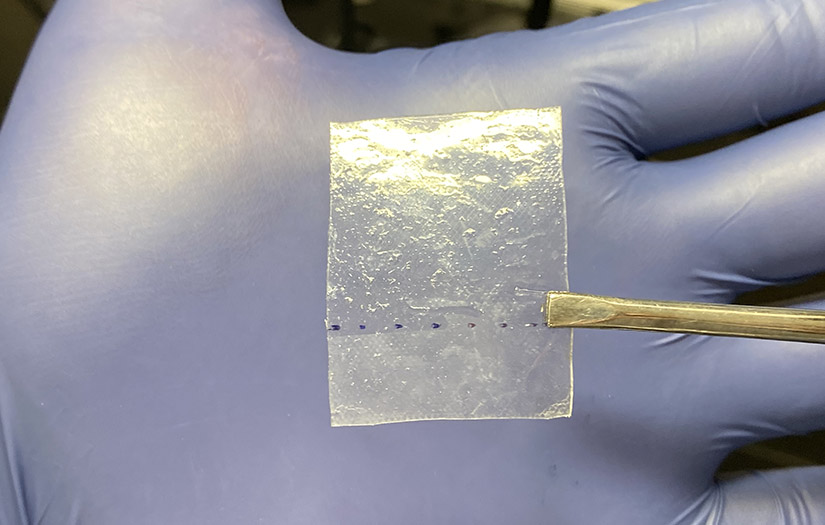Researchers Discover Another Way To Sequester Lead in Perovskite Solar Cells

Scientists at the National Renewable Energy Laboratory (NREL) and Northern Illinois University (NIU) have successfully prevented lead from escaping damaged perovskite solar cells. The research effort is their latest work in addressing concerns about potential lead toxicity.
The light-absorbing layer in perovskite solar cells contains a small amount of lead. Simply encapsulating solar cells does not stop lead from leaking if the device were to become damaged by severe weather conditions, such as a hailstorm. Instead, chemical absorption holds the key.
The researchers report being able to capture more than 99.9% of leakage. Their findings, in an article titled “On-device lead absorbing tapes for sustainable perovskite solar cells,” appears in the journal Nature Sustainability.
The authors are Fei Zhang, Jinhui Tong, and Kai Zhu of NREL; and Xun Li, Jianxin Wang, and Tao Xu of NIU.
“It is valuable to develop an approach that can be applied to various perovskite solar cell configurations,” Zhu said.
Zhu and some of the same researchers in 2020 reported successful experiments in sequestering lead should a perovskite cell become damaged. They developed lead-absorbing films, applied them to the two sides of a cell, and then smashed them with a hammer and slashed them with a knife. The damaged cell was then immersed in water. The scientists found the films prevented more than 96% of the lead from leaking into the water.
Researchers elsewhere followed up on the lead concern and developed a resin that could be incorporated into a perovskite solar cell. But, as the NREL and NIU scientists noted, “These additional modifications could complicate the device fabrication and configuration and potentially limit device performance and scale-up.”
Instead, the authors noted in the paper, a better proposition is to develop durable and highly efficient lead-absorbing components that can be “conveniently mounted” onto the perovskite solar cell as an accessory.
The NREL and NIU scientists believe they have found a solution in using a tape-like chemical absorption approach that can be readily installed on both sides of a perovskite solar cell. In a series of tests, the tapes captured almost all of the lead leakage without compromising the cell’s performance and operation. The tapes were made of a standard solar ethylene vinyl acetate (EVA) film and a pre-laminated di(2-ethylhexyl) methanediphosphonic acid layer.
After damaging the perovskite solar cells, the scientists conducted a series of tests to quantify how much lead would escape into water. In one experiment, the concentration of lead in water that fell on the damaged device averaged about 19.14 parts per million. The tape brought that figure down to 2.13 parts per billion. To put this figure in context, the Environmental Protection Agency considers water safe to drink if the lead content is less than 15 parts per billion.
“Since EVA has been extensively used as a cost-effective and durable encapsulating material for silicon-based solar panels, the integration of lead-absorbing materials with EVA provides an industrially ready and stand-alone component to facilitate the future market adoption of perovskite solar cells,” Xu said.
The Department of Energy’s Solar Energy Technologies Office funded the research.
Last Updated May 28, 2025
